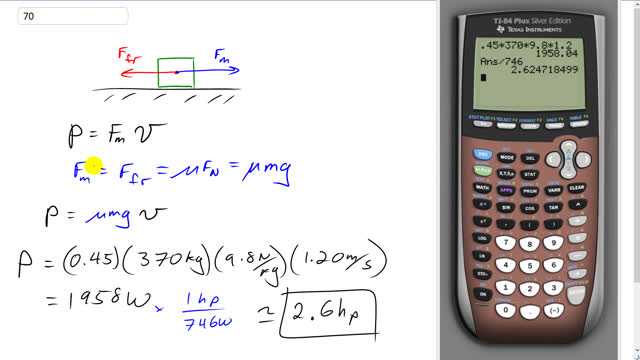
What minimum horsepower must a motor have to be able to drag a 370-kg box along a level floor at a speed of 1.20 m/s if the coefficient of friction is 0.45?

In order to watch this solution you need to have a subscription.
This is Giancoli Answers with Mr. Dychko. Since this box is sliding along a level floor at constant speed, the force applied by the motor to the right must equal the friction force going to the left. So the power output of the motor is going to be equal to the force of the motor times speed of the box and the force of the motor equals the friction force and friction will be coefficient of kinetic friction times the normal force. And the normal force is equal to gravity because there's no vertical acceleration that means gravity downwards must equal the normal force upwards. So we plug in μmg, in place of, force for the motor. And so we have 0.45 coefficient of friction times 370 kilograms times 9.8 newtons per kilogram times 1.2 meters per second which gives us 1958 watts and we convert that into horsepower by multiplying by 1 horsepower for every 746 watts, which gives us about 2.6 horsepower, with two significant figures. And this is the minimum horsepower needed because we made this assumption that the motor force equals the friction force. If there was acceleration, then well, that assumption would no longer be true and we would be calculating a different power. Anyway, there you go.